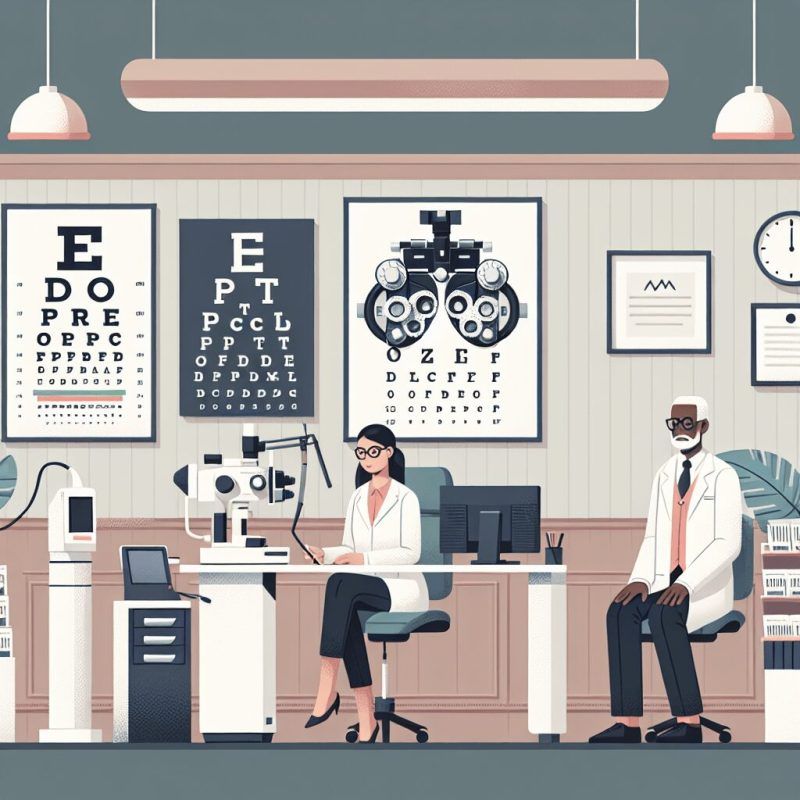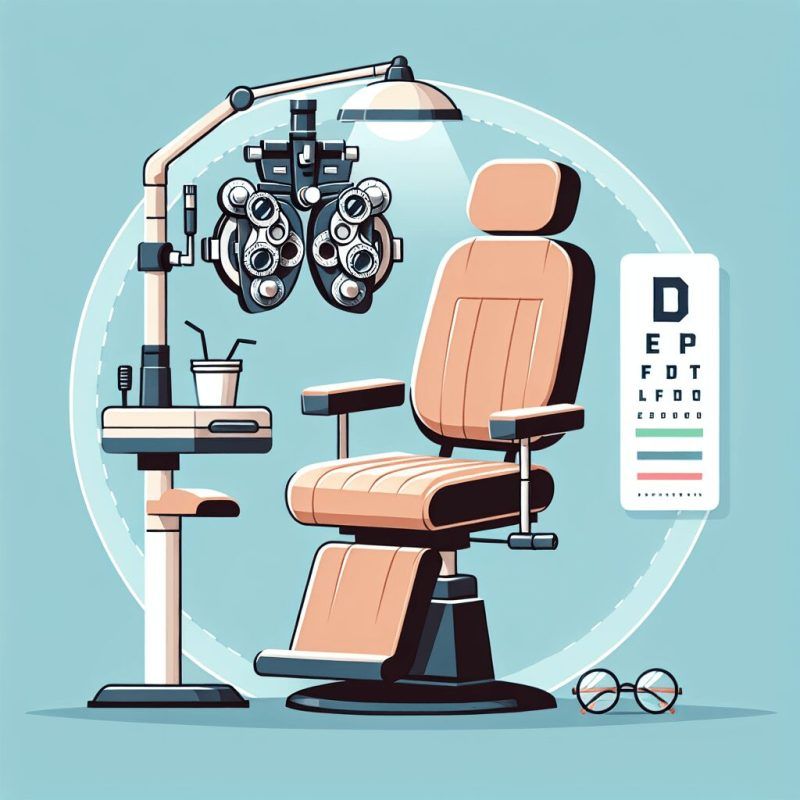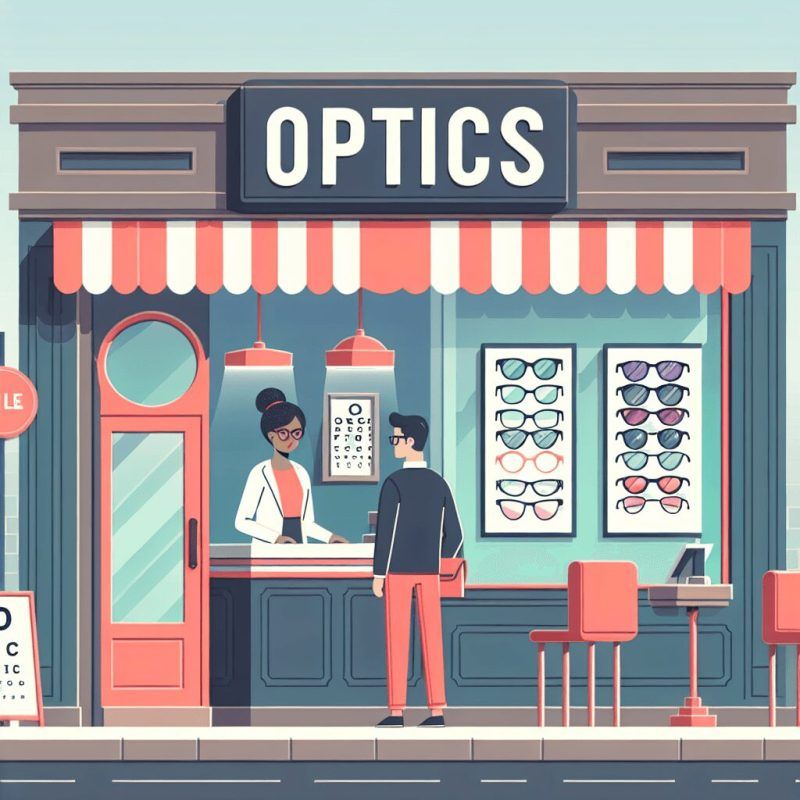Doctor's Corner
Understanding the Importance of a Refraction Test
Have you ever wondered why your vision seems blurry or why you struggle to see things clearly? One of the most important tests to help answer these questions is a refraction test. This simple yet powerful exam can pinpoint the exact prescription you need for glasses or contacts to correct your vision.
Understanding the importance of a refraction test can make a big difference in how you see the world around you.
Let’s explore why this test is so crucial for your eye health and visual acuity.
Why is a Refraction Test Important?
What Is Eye Refraction?
Refractive errors in the eye can come from imperfections in the shape of the cornea, lens, or eyeball. This can cause light to bend incorrectly, leading to blurry vision or trouble focusing.
Eye refraction is important for determining a person’s glasses or contact lenses prescription. It measures how light bends when it enters the eye. This helps find issues like myopia (nearsightedness), hyperopia (farsightedness), astigmatism, and presbyopia.
During a refraction test using a phoropter, an eye doctor can check the eye’s refractive state. Then, they can give lenses with the right strength to fix vision problems.
It’s crucial to have a complete eye exam to maintain eye health, especially for kids, people with diabetes, and those with family history of glaucoma. Regular eye care, including refractive testing, ensures accurate prescriptions for clear vision.
Refractive Errors
Refractive errors like nearsightedness, farsightedness, and astigmatism can affect eyesight. They can make it hard to focus on things at different distances. Symptoms may include blurry vision, eye strain, headaches, and trouble reading or seeing faraway objects clearly.
To diagnose these issues and get the right glasses or contacts, a refraction test is needed. Knowing your prescription is important for managing these errors. It helps ensure your lenses correct your vision properly. Using the right lens strength as prescribed by an eye doctor can enhance vision and eye health.
Regular eye exams , especially for kids, people with diabetes, or a family history of glaucoma, are crucial. They help keep an eye on refractive errors and maintain good vision.
Who Needs a Refraction Test?
Eye Refraction Test Results
The results of an eye refraction test show the lens prescription needed to fix any eye problems found during the exam. This test can identify nearsightedness, farsightedness, astigmatism, or presbyopia.
The results help determine the correct lens strength to improve vision. Using a phoropter, the eye doctor can create a personalized prescription for each person’s vision needs.
Getting the right prescription is important to achieve clear vision with glasses or contacts. It’s crucial for eye health and treating any specific conditions found during the eye exam.
Regular eye check-ups are necessary, especially as you get older or if you have diabetes or a family history of eye diseases like glaucoma. This helps maintain good eye health.
What to Expect During a Refraction Test
During a refraction test, the eye doctor uses equipment like a Phoropter to check how light bends in the eye. This helps determine the right lens prescription.
The process involves looking through the Phoropter while the doctor tries different lenses to find the best correction for vision problems like astigmatism, nearsightedness, or farsightedness.
This test is important for spotting vision issues and getting the right glasses or contacts. It’s a key part of an eye exam, especially for those with diabetes or a family history of glaucoma.
By checking how light bends in the eye, the doctor can make sure your vision is clear and maintain good eye health. Regular refraction tests are vital for clear vision, managing nearsightedness, farsightedness, and presbyopia, and meeting individual eye care needs.
Understanding Your Prescription
Nearsightedness
Nearsightedness, or myopia, makes close objects clear but distant objects blurry. It happens when the eyeball is too long or the cornea is too curved. This causes light to focus in front of the retina, not on it.
Regular eye exams are important to track nearsightedness as it can get worse over time. This makes it hard to see faraway objects clearly. During a comprehensive eye exam, an eye doctor will do a refraction test. This helps determine the level of nearsightedness and the right lens strength for glasses or contacts.
Treatment for nearsightedness usually involves wearing prescription lenses. This corrects vision and may slow down its progression, especially in children. Optometrists use a phoropter to diagnose nearsightedness accurately and provide the right corrective lenses.
Regular eye exams are vital to keep good eye health and quickly address any vision changes.
Farsightedness
Farsightedness, or hyperopia, means seeing far-away objects more clearly than close-up ones.
Symptoms of farsightedness include blurry vision up close, eye strain, headaches, and trouble focusing nearby.
Regular eye check-ups are important to spot farsightedness early and prevent eye strain.
During an eye exam, a refraction test helps determine the right lens prescription to correct farsightedness.
This test analyzes light refraction in the eye, focusing on the cornea and lens for an accurate measurement.
Kids, people with diabetes, and those above 40 face a higher risk of farsightedness and should get comprehensive eye exams for monitoring.
Optometrists use a phoropter to prescribe glasses or contact lenses for addressing farsightedness and keeping vision clear.
Astigmatism
Astigmatism is a common eye issue found during a full eye checkup. An eye doctor can spot astigmatism by observing how light moves in the eye while using an eye chart. This problem, like nearsightedness and farsightedness, is a type of issue that glasses or contacts can correct.
People with astigmatism have a cornea or lens that isn’t evenly shaped, causing blurry vision at different distances. Treatment involves specially made glasses or contact lenses.
Regular eye checkups are vital for overall eye health. This is especially true for kids, those with diabetes, and individuals with a family history of glaucoma. These checkups help ensure good vision and catch issues like astigmatism early on.
FAQ
What is a refraction test?
A refraction test is an eye exam that measures a person’s prescription for eyeglasses or contact lenses. It assesses how well you can see objects at different distances and determines if you have nearsightedness, farsightedness, or astigmatism.
Why is a refraction test important for vision health?
A refraction test is important for vision health because it helps determine the correct prescription for glasses or contact lenses, improving overall vision clarity and reducing eye strain. Regular testing can also detect changes in vision, preventing potential eye conditions from worsening.
How often should I have a refraction test?
It is recommended to have a refraction test every year as part of your routine eye exam, especially if you wear glasses or contacts. If you notice changes in your vision, schedule an appointment sooner.
What can a refraction test help diagnose?
A refraction test can help diagnose refractive errors such as myopia, hyperopia, astigmatism, and presbyopia. It can determine the appropriate prescription for corrective eyeglasses or contact lenses.
Are there any risks associated with a refraction test?
No, a refraction test is a safe and non-invasive procedure. The only potential risk is mild discomfort from the bright lights or eye drops used during the test.
If you need to get tested and diagnosed for your eye care needs, look no further than Superior Eye Care in The Woodlands or Quality Eye Care in Willowbrook. They offer top-notch services that will provide you with the best care possible.
The post Understanding the Importance of a Refraction Test first appeared on Optometrist in Woodlands & Willowbrook TX.
Doctor's Corner





